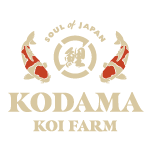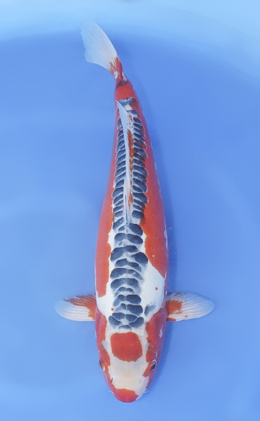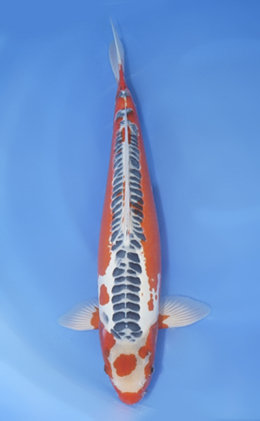Marusei Koi Farm
Interview with Marusei Koi Farm
Interview on May/June 2003
Meet Mr. Seitaro Hirasawa
by Mamoru Kodama
Kodama:
You are one of the representative breeders in Niigata. What do you always think about Nishikigoi of Niigata?
Seitaro:
I believe that Nishikigoi is Japanese cultural heritage. I consider the Niigata breeders' job is to protect the cultural heritage. There was a person called Hikosaburo Hirasawa who was one of my ancestors. He was a mayor of Yamakoshi village. He exhibited Nishikigoi at the Taisho Era Exhibition at the village. His Majesty, the Emperor in those days, was captured by the beauty of the koi and spent 30 minutes inadvertently and was interested in Nishikigoi. Such a fact made him realize intuitively that Nishikigoi were very attractive creatures. Thereafter he studied the breeding of Nishikigoi and made an effort for improvement of Nishikigoi and the breeding methods from generation to generation. I hear that this enlightened a lot of villagers to work on the production of Nishikigoi.
Kodama:
It is a splendid idea that Nishikigoi is a Japanese cultural heritage.
Seitaro:
It is our mission as breeders to keep Nishikigoi as a cultural heritage, but there are too many varieties in Nishikigoi. Now more than 80 kinds of koi are registered as a variety. It is impossible that one breeder alone can save them all. I believe it is important that every breeder shares the burden to save these Nishikigoi.
Kodama:
Yes, that's right. What is a variety Seitaro especially keeps as cultural heritage?
Seitaro:
It is Mukashi (old-type) Ogon. I began this work 47 years ago. It is the Ogon that was popular around the time that attracted me to Nishikigoi. It is not exaggerated to say that I was so much attracted by the glittering Ogon that I fell into the breeding of Nishikigoi. I think that it is my mission to restore the old-type Ogon.
Kodama:
Yes, your Mukashi Ogon is indeed beautiful and wonderful. What is the difficulty to produce and preserve the Ogon?
Seitaro:
The difficulty is to produce one with good body conformation. Body conformation is after all the highlight of the Ogon variety. As you know, the Ogon variety has the quality of becoming very big when comparing with Gosanke—Sanke, Kohaku, and Showa. I pull out and maximize the quality without stopping the growth on the way. Some Koi grow more than 1 m (40 in.) long. The body conformation is after all, important when it reaches 1 m.
A big but thin body is not good. I still think that it is important to have the adequate body conformation for the size. When they are 70 cm (28 in.) long, they must have the proper body for 70 cm. When they are 90 cm (36 in.) long, they must have the proper body for 90 cm. It is difficult to develop the body conformation.
Kodama:
As a method to keep the body conformation, what specifically do you think?
Seitaro:
The key is still the regularly scheduled feeding. And nutritional balance is also important to keep koi growing and to maintain good body conformation. In other words, we feed nutritionally balanced food regularly. In addition to this, because Niigata has such a distinctive four seasons of spring, summer, autumn and winter, I think that it is important to give the right food for each season.
Kodama:
Nishikigoi fans are now all over the world. For example, in Southeast Asian countries with a tropical climate where it is summer throughout a year, what kind of feeding would you recommend?
Seitaro:
The food and feeding method I developed is the food and method for Niigata climate. I have developed them for 47 years, but they are not necessarily acceptable in warm countries such as Singapore or Thailand. I think that it is important to study what food and feeding method is good for the warm climate.
Kodama:
Now what do we need to look for when we buy two-year-old and three-year-old Ogons of yours?
Seitaro:
When you buy my koi, I would like you to buy ones that have good body conformation with no big bellies. Body conformation is different in male and female. Each one has its own body style. Looking at the body conformation closely, please buy the one that has smooth and sturdy body and does not have too big a belly.
Kodama:
Congratulations for winning Grand Champion at the 42nd All Niigata Nishikigoi Show. Please tell us about the Grand Champion winning Kohaku.
Seitaro:
That Kohaku was bred with a parental koi from the Sensuke bloodline seven years ago. I raised the koi from tosai with great care. I am very proud of her winning Grand Champion of Niigata in her seventh year.
Kodama:
The excellence of Kohaku of Seitaro was confirmed again by winning Grand Champion. Please tell us about characteristics of Seitaro Kohaku.
Seitaro:
As I am challenging to breed big Mukashi Ogon, I also challenge for big Kohaku. This is why I introduced the Sensuke blood to my koi early because the bloodline is characterized with big growth. Growing large and good body conformation are the characteristics of Seitaro Kohaku.
Kodama:
When a customer buys a 2-year-old of Seitaro Kohaku, what does he need to pay attention to?
Seitaro:
Because I cull out 90% at a stage of tosai (one-year-old), my koi are already carefully selected.
Kodama:
Would you also share the history of you and your koi farm, Marusei Koi Farm, next? When did you start breeding koi?
Seitaro:
I entered this industry 47 years ago.
Kodama:
What kind of koi did you breed at the time?
Seitaro:
When I started it, it was the time when Mr. Sawata Aoki developed Ogon and the Ogon created a big sensation. The “Ogon” charmed me, and I worked hard to breed that variety. Then I produced Hikarimono in general like Kin Ki Utsuri and Kin Showa. Now I produce all kinds such as Sanke, Kohaku, Showa, Kawarimono, and so forth.
Kodama:
Do you have any event that stays as a memory during the last 47 years?
Seitaro:
It is that I stabilized the platinum variety in 1963. When crossing white shining koi that came out of the Ogon by a mutation with white shinning koi that came from Yamabuki Ogon by a mutation, I produced a wonderful crop. All the fry were beautifully platinum. Ogon is the koi that shined in yellow corollary. From there, pure white platinum koi came out. I still remember the great emotion so vividly just like it happened yesterday. I also fixed the Matsuba Ogon variety.
Kodama:
It is a great and extremely difficult task for a breeder to create “a new variety." I express my respect from the bottom of my heart to Seitaro who developed the platinum. By the way, how many people on your staff are engaged in breeding in your farm?
Seitaro:
Now there are six staff members led by the eldest son.
Kodama:
Seitaro is one of the leading breeders in Niigata. Please tell us your achievements in koi shows of Niigata.
Seitaro:
It is hard to win Grand Champion in the All Niigata Koi Show, but this is the second time. Because all the breeders in Niigata make an effort for this koi show, winning Grand Champion two times is a pride of us, the Marusei Koi Farm.
Kodama:
Yes, it is very difficult to win Grand Champion at the All Niigata Koi Show, where so many breeders compete. Again, congratulations this time and thank you very much for your time today.
We have koi available to buy from Marusei Koi Farm online if shown below the search field. If not, contact us with what you're looking for and we'll help find the right koi.
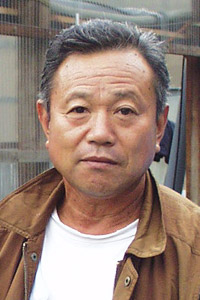
Showing all 2 resultsSorted by latest
Can't find the koi you're looking for? Click here to use our koi request form
Request the Koi of Your Dreams
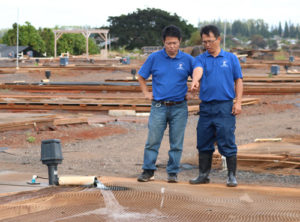
What can we help you find?
Let us know more about what you are searching for and we will look into our inventory to help you find the perfect koi. Tell us a description, variety, size range, and price range you are searching for.
We have a large stock of koi that are not listed on our website and we can also look when we are visiting Niigata, Japan. Complete this form and we will follow up with you directly.
Koi Request Form
